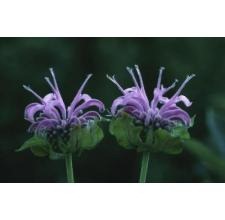Bee balm, botanically known as Monarda didyma, is native to eastern North America and was called Oswego tea by John Bartram, an early explorer, who found the settlers near Oswego, New York, using the leaves as a beverage. It is a plant of rich, moist soils, even somewhat boggy areas. Like many other plants, a lack of bloom could be caused by a number of factors.
Growing Bee Balm
-
Bee balm is a perennial, a plant that produces stems and flowers every year, then dies down to the roots in winter, sprouting again the next spring. There are quite a few varieties available, from 1 foot tall to the more usual 3 to 4 feet and with pink, lavender or red flowers. Most prefer a moist to wet soil and will grow poorly in sandy, dry conditions. Some varieties, however, are more tolerant of drought than others. Some will get a leaf disease called powdery mildew if crowded, without adequate air circulation or if stressed by dryness. They like full sun, given adequate water, but will accept partial shade.
Shade
-
Most plants that prefer full sun will not flower and will grow thin and spindly in shade and Monarda is no exception. A spot on the north side of a house or under overhanging branches will not receive enough light to produce flowering. You could move it to a sunnier spot or remove branches to allow more light to penetrate to the ground.
Nitrogen
-
Bee balm likes rich soil but overfertilizing with a nitrogenous substance such as fish fertilizer, bone meal or a high-nitrogen synthetic fertilizer will result in lush, leafy growth and few, if any, flowers. Nitrogen is an essential part of chlorophyll, needed for photosynthesis, and adding too much seems to block the production of flowers and fruit. If this is the problem, fertilize with a 0-10-10 or other low-nitrogen formula and water frequently to leach the nitrogen out of the soil.
Drought
-
Varieties of bee balm that are not drought tolerant will grow poorly if not watered frequently or planted in a moist situation. In some instances, they may simply not grow much at all. You could move the plant to a place that is more easily watered, perhaps with a bit of shade and then fertilize with a balanced formula, 5-10-10 or 10-10-10, to get the plant growing again.


Deprecated: strpos(): Passing null to parameter #1 ($haystack) of type string is deprecated in /home/agriviek8Qv/agriviet.net/public_html/wp-includes/comment-template.php on line 2522